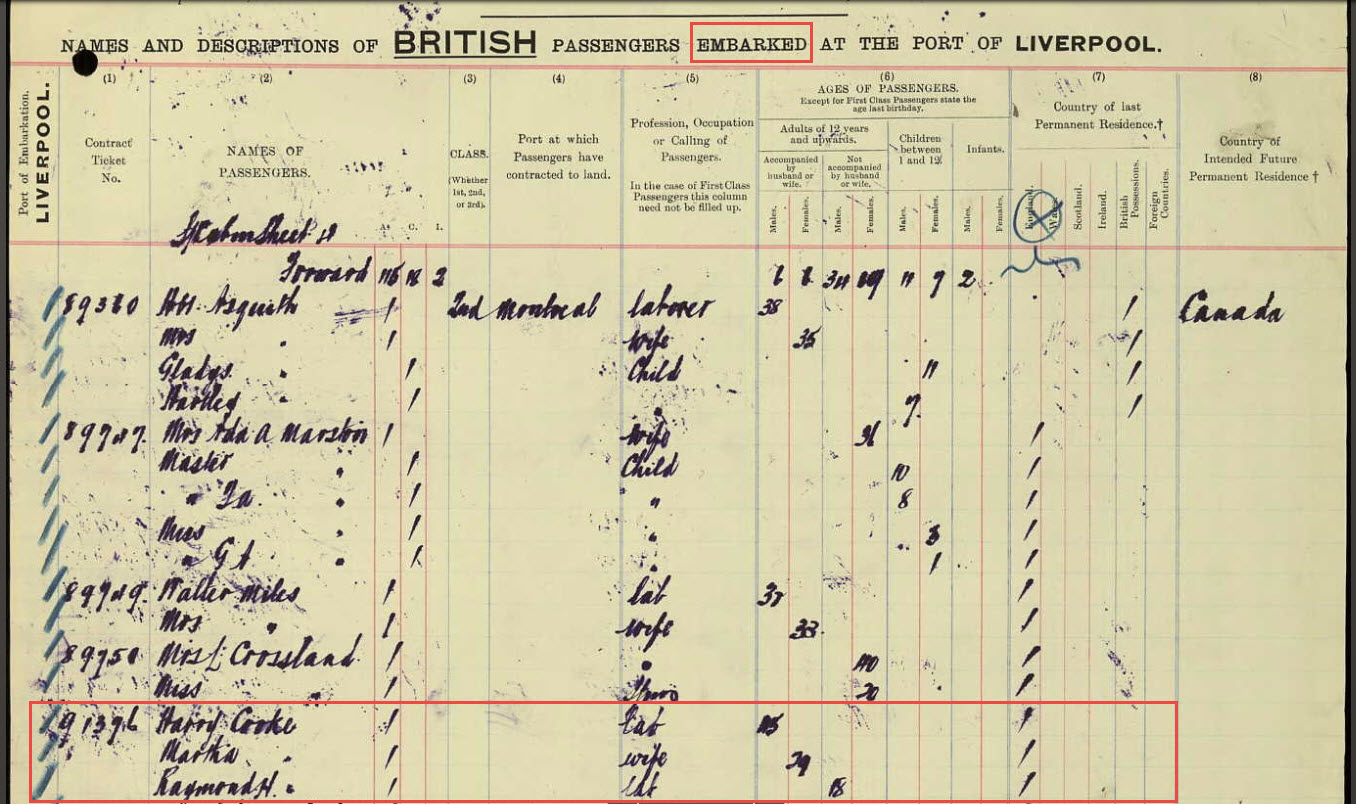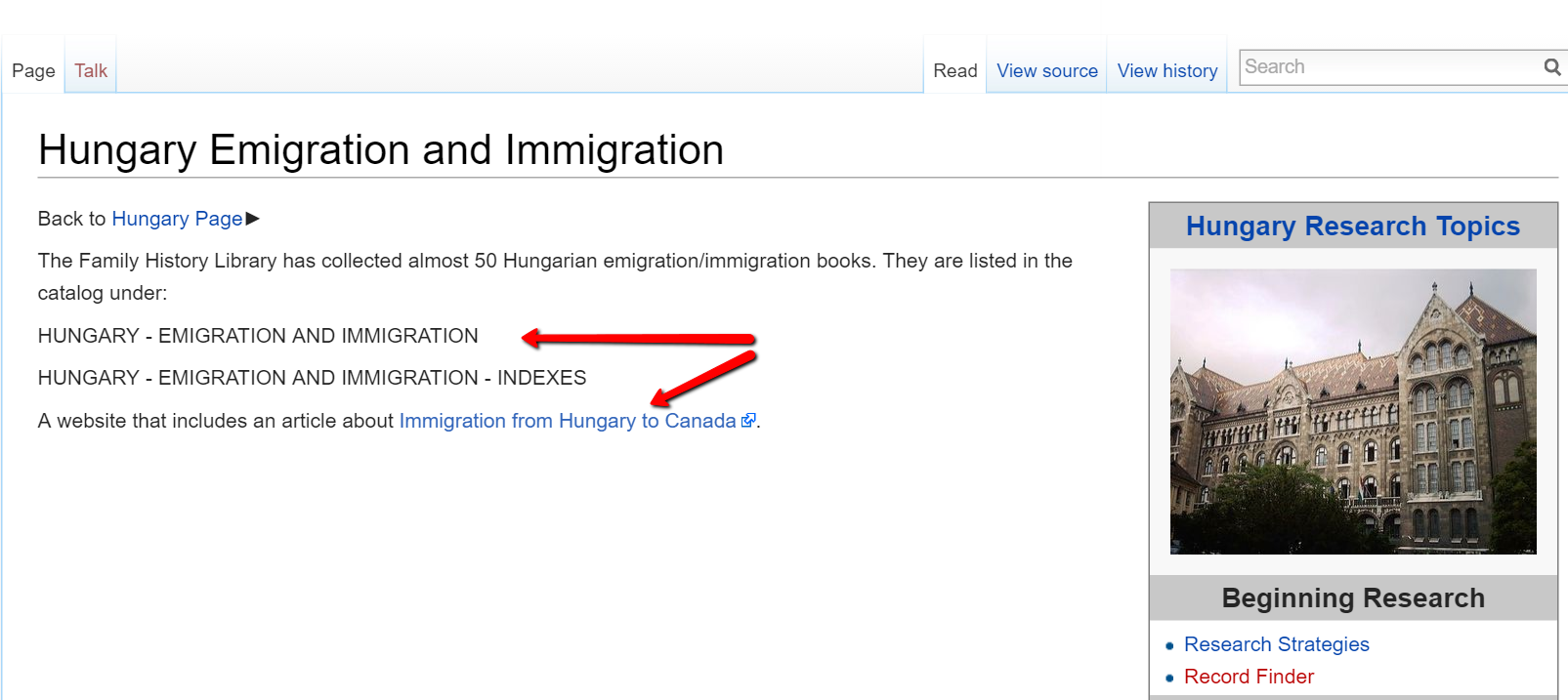We Dig These Gems! New Genealogy Records Online
 Here’s this week’s roundup of new genealogy records online. Highlights: Canadian marriages, German emigrants, Philippines civil registrations, Russian and Ukrainian church records and Michigan marriages.
Here’s this week’s roundup of new genealogy records online. Highlights: Canadian marriages, German emigrants, Philippines civil registrations, Russian and Ukrainian church records and Michigan marriages.
CANADA – MARRIAGES. A new collection of district marriage register images for Ontario, Canada (1801-1858) is now free to browse at FamilySearch.org. Most entries are for the 1830s-1850s.
GERMANY – EMIGRANTS. The (former) Grand Duchy of Oldenburg Emigrants database just passed the 100.000 person mark. According to a note from the site host, “The database contains beside the emigrant itself also the family members we could trace in Germany or the Country to which he migrated.” Learn more at this blog post from the Oldenburgische Gesellschaft für Familienkunde. Click here to hear online German records expert Jim Beidler talk about new German records online.
PHILIPPINES – CIVIL REGISTRATIONS. FamilySearch.org has added 1.7 million+ browsable records to an existing collection of Philippines national civil registration records (1945-1984). These are described as “marriage and death certificates from various localities,” excluding Manila, for which there is a separate database.
RUSSIA – CHURCH. Nearly half a million browsable records have been added to a free FamilySearch.org collection of church books for Tatarstan, Russia (1721-1939). These are described as “images of births and baptisms, marriages, deaths and burials performed by priests of the Russian Orthodox Church in the republic of Tatarstan.” More records are being added as they are available.
UKRAINE – CHURCH. Another 205,000 browsable records have been added to a free FamilySearch.org collection of church book duplicates for Kyiv, Ukraine (1734-1920).
U.S. – MICHIGAN – MARRIAGES. FamilySearch.org has added more than 60,000 indexed names to its collection of Michigan county marriage records (1820-1940) and another 2000+ names to its collection of Michigan church marriage records (1865-1931).
 Thanks for sharing this post about new genealogy records online with your genealogy buddies on your favorite social media sites! We love spreading good news.
Thanks for sharing this post about new genealogy records online with your genealogy buddies on your favorite social media sites! We love spreading good news.
Emigration Records With an E: When Your Ancestors Left the Country
Traveling ancestors created records when they left the country of their origin and when they arrived at their new residence. We often talk about immigration, with an I, but have you researched your ancestors emigration records with an E?
When our ancestors traveled from one place to another, they became two types of migrants. First, they were Emigrants with an E, and then, they were Immigrants with an I. Emigration with an E means someone exiting a country and immigration with an I means someone coming into it. Let’s learn more about emigration…with an E.
I live in a country that doesn’t have much in the way of historical emigration records, but other countries do. I have to remember these emigration records when I start looking overseas for my relatives who were crossing the pond to live here.
EXAMPLES OF EMIGRATION RECORDS
Swedish parishes kept emigration records which are now on Ancestry dating back to 1783. According to the database description, this record set is pretty complete, representing about 75% of those who actually left the country. These rich records can provide place of origin, destination, and the date and place of departure.

For a time, the U.K. also kept outward passenger lists of those leaving the U.K. ports for destinations outside of Europe. The lists include British citizens and those traveling through the U.K. These passenger lists no longer survive for the years before 1890, but they are on Ancestry for the years of 1890-1960. Of course, while writing this post I just had to take a moment to do a bit of searching myself, and that lead to this genealogy gem: my husband’s grandfather, and his parents embarking at Liverpool in 1912!

I also spotted this interesting item in the database description. Quoted from the U.K. National Archives website:
“Between 1890 and 1920, among the highest tonnage of ships were leaving British ports bound for North America. Many passengers were emigrants from Britain, Ireland, and Europe. European emigrants bound for America entered the United Kingdom because traveling steerage was less expensive from a British port than from a port in Europe. The shipping companies imposed restrictions on passengers registering; passengers had to have British residency of six weeks to qualify. Many passengers too impatient to qualify for residency changed their names to avoid detection.”
A name change would certainly present a challenge, but it’s very good to know to be on a look out for that situation. This is another example of why it is so important to read the description of the databases you search.
MORE EMIGRATION RECORD COLLECTIONS
A quick search of Ancestry’s card catalog shows emigration collections for Prussia, Switzerland, a few parts of Germany, Jewish refugees from several nations in Europe, and an interesting collection of Dutch emigrants who came to North America with the help of the Canadian and Dutch governments.
Another excellent resource is the FamilySearch Wiki. You can search for the name of the country and the word emigration (with an e) to find out more about your targeted area. I typed in Hungary emigration and found the following information.

Did your emigrant (or immigrant) ancestor generate records in the country he or she left from as well as the country he or she entered? Remember to check!
MORE GEMS ON IMMIGRATION
- Assisted Immigration to Australia: Queensland Passenger Lists
- Immigration and Naturalization Records for Family History, Part I
- Immigration and Naturalization Records for Family History, Part II
What the U.S. Federal Government Could Learn from Genealogists
Beware: Personal Opinions are coming your way in this article!
In my book The Genealogist’s Google Toolbox I emphasize how to use Google to determine what is already available and free online before investing your limited time and money in offline family history searching. Smart genealogists allocate their resources wisely, getting the most bang for their buck. And collaboration between individual genealogists allows us to accomplish even more.
 It looks like the U.S. Federal Government could learn a thing or two from savvy genealogists. The Washington Times is reporting that Congress’s auditor has discovered that our tax payer money given to the federal government isn’t being spent very wisely. (Imagine that!) Agencies fail to collaborate and share information, creating redundancy and overspending.
It looks like the U.S. Federal Government could learn a thing or two from savvy genealogists. The Washington Times is reporting that Congress’s auditor has discovered that our tax payer money given to the federal government isn’t being spent very wisely. (Imagine that!) Agencies fail to collaborate and share information, creating redundancy and overspending.
One example from the article: the Commerce Department “has been charging other government agencies millions of dollars for reports that the other agencies could just as easily have gotten online, for free – often with a Google search.”
This news makes it even harder to swallow the news that the National Archives and Records Administration (NARA) is suffering reduced hours of service due to budgetary issues.
The Bottom Line:
Google Twice, Pay Once (and only if you have to!)
Prison Inmate Photos: “The Eyes Are Everything”
Matt from Omaha, Nebraska (U.S.) recently told me about a project his cousin is working on that is so cool the story was picked up by U.S.A. Today.
While poking around at an 1800s-era Iowa prison about to be torn down, Mark Fullenkamp came across boxes of old glass negatives. Upon closer inspection, he found they were intake photos of the inmates. Some were 150 years old!
Mark first set out to digitize and reverse the negative images of over 11,000 prison inmate photos. Others gradually became involved, like scholars at University of Iowa where he works and even inmates at the Iowa Correctional Institution for Women. A doctoral candidate who was interviewed by U.S.A. Today says she’s struck by the moment these photos were taken: when their lives were about to change forever. Though many look tough for the camera (and presumably the other inmates), she sees a lot of emotion in their expressions: “The eyes are everything.”
Now Fullekamp’s team is trying to connect names and stories with the photos. It’s not easy, but many of the pictures have inmate numbers on them. Some files have surfaced with inmate numbers and names in them. Others are stepping forward with memories.
Read more about the project on Matt’s blog.
Got a digital photo archiving project of your own? Click here to learn about a free ebook published by the Library of Congress on digital archiving.


